#the meta explanation is It's The Same Outfit But Viewed From A Different Lens
Text
It's been like a year since Tales of the Jedi came out but it's still hilarious to me that when returning to early Clone Wars Ahsoka they took one look at the age inappropriate tube top that's impossible to take seriously and said damn did we really put her in this and just retroactively gave her a better outfit and there was just an unspoken agreement with the audience that we would just roll with it and pretend that that was her outfit the whole time.
#i have too ways of rationalizing the outfit change in my head one from an in-universe perspective the other from a meta perspective#the in-universe one is that it's just a training outfit like the one anakin wore in the hologram from rebels#cause they're kinda aesthetically similar and it would explain why we only see her in it during training sessions#the only problem with this explanation is it means her training outfit is more practical than her regular outfit which is kinda silly#the meta explanation is It's The Same Outfit But Viewed From A Different Lens#aka it's just that thing cartoons do sometimes where they redesign the characters and just act like they always looked like that#like when batman the animated series transitioned into the new batman adventures#or when lego ninjago changed the designs in season 8#no in-universe explanation for why they look different they just always looked like that now don't question it#ahsoka tano#star wars#shut up tristan#also i just realized i accidentally typed too instead of two in that first tag but i'm not going back and typing all that again
37 notes
·
View notes
Text
The Many Faces of Shiro
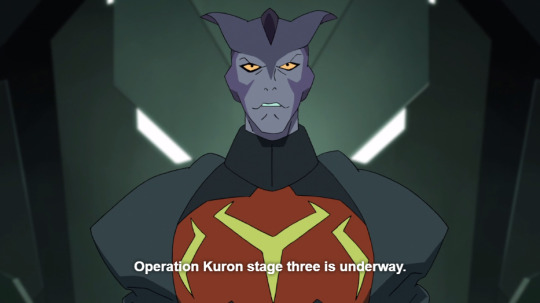
“Kuron” is the romanization of clone.

It’s rather obvious. If the show were attempting to surprise the audience they could have easily excluded these scenes or had them appear in a later episode. If going by the classical defintion of a twist, that is something that surprises the audience, Clone Shiro’s real identity (I’m nicknaming him Kurono) would have been a card to keep closer to one’s chest. Let the audience assume that this is the real Shiro, and then at the last moment reveal the deception.
However, in letting the audience know that this is a clone right away, Voltron might be asking us to look at Kurono in a much different way then originally we would have if we were simply led to believe he was Shiro. We might actually be able to learn a great deal about Shiro, by using the fake Shiro, and also the many different fake Shiros as a lens to analyze him.
This is a quick and dirty explanation of the Serling method of storytelling twists. The beginning, the exposition tells everything the audience needs to know and tells the absolute truth, but the ending manages to change the viewer’s expectations on what they learned in the beginning. However the beginning and end still cooperate with one another in a basic way. That is a question is asked in the beginning and answered in the end.
Planet of the apes starts with the main character having a negative view of humanity his question is if they will ever escape their warlike ways, the answer is delivered in the end, no they won’t. The twist in actuality isn’t that important, it’s just a means of delivering the answer at the start of the movie.
Therefore, why reveal that this Shiro is a clone in such an obvious way akin to playing with your cards face up? Especially since emotional reaction to a fake shiro storyline might require believing for a moment that Shiro had really returned? It’s because the twist in actuality changes nothing about the question asked.
The question asked by using a clone Shiro plot line, is the question your mind is trained to ask immediately when you detect a clone is in the midst of a storyline. “Where is the real Shiro?” or if there are two Shiro’s onscreen at some point then the question becomes “Who is the real Shiro?”
I’ll argue however that this question is actually something that’s been central to Shiro’s character from the beginning. Not only that but in previous seasons, there have been hints that Paladin Shiro might not even be the original Shiro. Sources [x, x].
Technical details also are not entirely important, but also remember that Paladin Shiro despite being human is shown able to generate and use Quintessence the same way an altean can through his arm. That obviously implies some physiological change was invoked on Shiro before he became a paladin, already marking him as different from Cerberos Shiro.
Anyway, the blade of Marmora scene discussed in the first link.
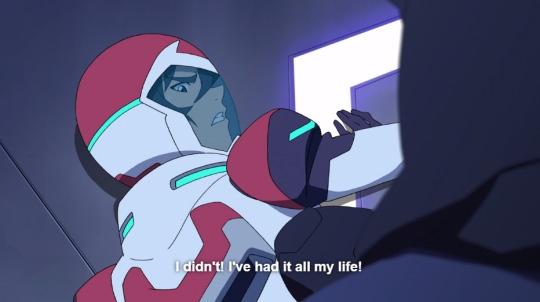
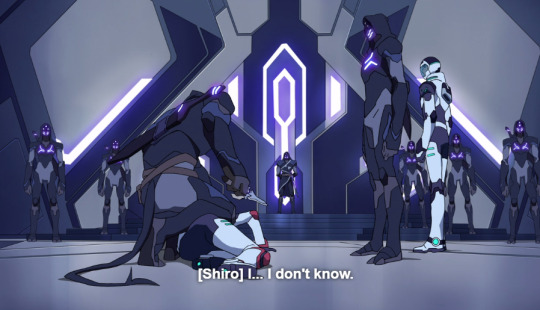
Shiro and Keith are heavily implied to have known each other at the Garrison. Keith is implied to have gone to rescue Shiro specifically because it was Shiro when he crash landed on earth. Keith even says that the blade of Marmora he carries is something he’s had his entire life but Shiro himself cannot confirm this.
Not only that but clearly when a knife is being pushed against Keith’s throat and he might die, Shiro cannot bring himself to simply lie to protect Keith. Eevn though Keith’s life should be inherently more valuable than the blade of Marmora’s cooperation.
This suggests two possibilities, either Shiro is lawful good to a stupid extent, or Shiro genuinely does not remember this critical detail of his and Keith’s shared past. Keith even says “Shiro, you know me-” when trying to persuade him to take his side suggesting it is something Shiro should know. Also that not remembering, or not knowing how to act brings out a hesitance and a character flaw in Shiro.
I’m not going to go into whether Shiro is yet another clone at the time or not, because as I said this isn’t about the technical details. However, it’s worth pointing out that this Shiro is different from the Shiro Keith knew. Not only that but in the same episode we see an entirely different Shiro in Keith’s mindscape. There are three Shiro’s then, the Shiro that Keith knows, the acting Paladin Shiro, and then the Shiro that appears in Keith’s mindscape.
Except that there are actually more versions of Shiro than that, because different incarnations and differing versions of Shiro’s character is something that’s existed since the beginning. Even when Season Three sets up the possibility that there might be two Shiro’s, a real one and a clone, they also throw in Sven whose obviously meant to be an alternate universe Shiro.
If you keep a close tally from the beginning there is: Kerberos Shiro
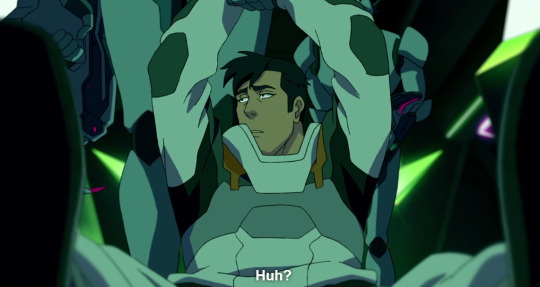
Paladin Shiro (The one we know the most about in seasons 1 and 2)
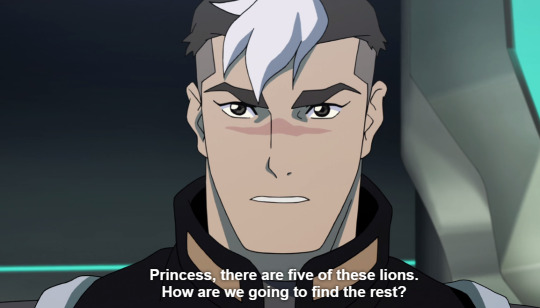
Champion Shiro
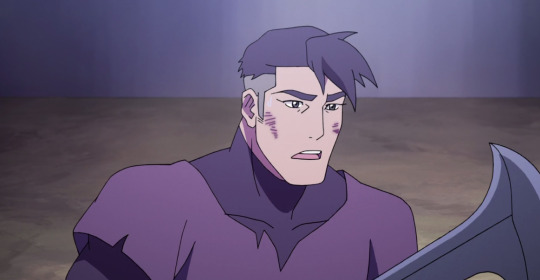
A hallucination created by Haggar to embody Shiro’s worst fears of himself, and likely his perception of himself (A Galra experiment gone wrong).
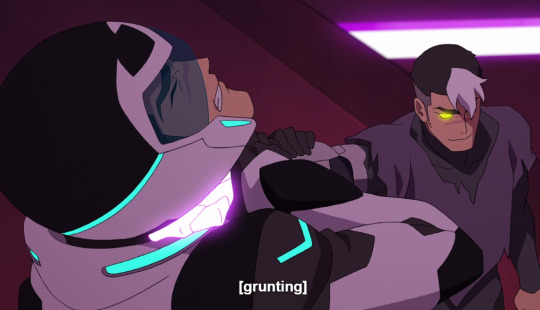
Mindscape Shiro created from Keith’s perception of him.

Then finally in the third season, Sven.

And finally of course, Kurono.
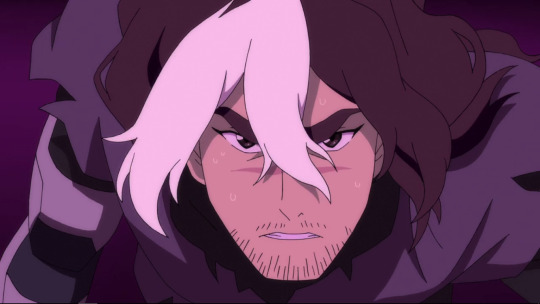
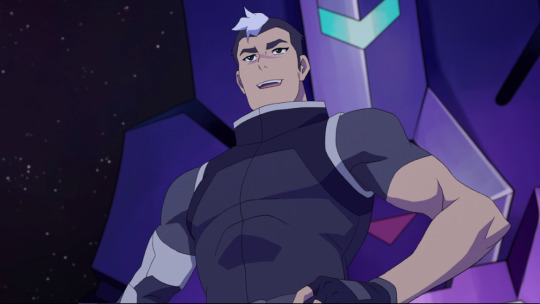
Another difference that points out Kurono might be a clone right away is the sudden outfit change and the hairstyle change, as well as Keaton’s performance making him sound a lot different than the paladin Shiro featured in the first two seasons. Once again, I think it’s meant to make it as obvious as possible that this is a fake, another offshoot of Shiro.
What exactly then is the point of showing so many possible variations of one character in a series, rather than just sitting down and focusing on developing the real Shiro? No other character has as many alternates as Shiro. Not even when traveling into the alternate dimmension, do they meet the alternate Allura she’s merely mentioned. This is clearly a trait and quirk that belongs solely to Shiro. That’s where you hit that question again, “Who is the real Shiro?”
It is a question that automatically is asked when there are just so many derivative versions of Shiro running around in Voltron. Not to sound like a clickbait article, but the answer of course may surprise you. It’s entirely possible that Shiro does not know himself.
We have a vague timeline of the events that led to Shiro’s escape in between Kerberos -> Prison -> Premise. The timeline is not entirely important though, the most important thing is that Shiro was inflicted a great deal of trauma in between. His trauma changed him, he could no longer simply go back to being pre-kerberos Shiro. However, rather than being given time to feel out the scope of his trauma and come to terms what his post trauma identity, he was immediately thrown into yet another high pressure situation where he was expected to lead.
Not only was Shiro an amnesiac and lacking details about his own identity, but everybody he met up with already had in mind their own version of what Shiro would be like. It’s deliberately shown at the beginning of Season 3 that Shiro is considered a hero back on earth to some extent, and all of the paladins knew about him before meeting him in the flesh.
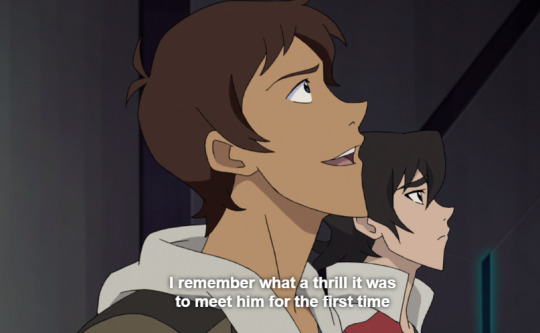

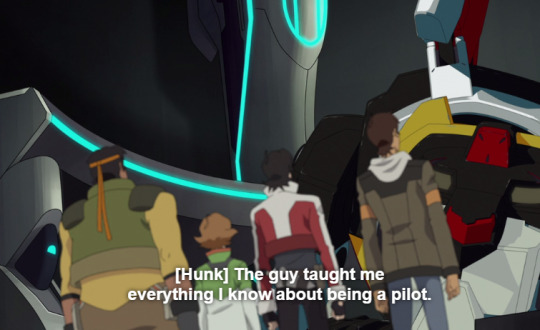
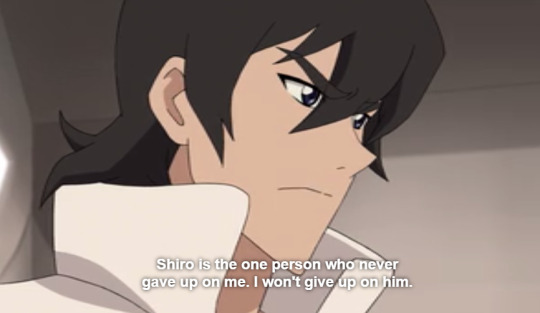
Hero, legend, teacher, holder and confidence and trust, Shiro is all of these things to everybody. When he came face to face with the paladins and in the light of his own splintering identity, Shiro then chose to try to be the best they wanted out of him. This is even shown a bit in Shiro’s leading style, as he often defaults to some variation of “Any idea guys?” when presented with a situation that he cannot solve on his own or grows insecure about.
The fight in season 2 episode 3, Shiro’s escape is a pretty good example of this. Shiro really only has one idea which is to shove the shield in his mouth, the rest are contributions from the other pilots of voltron. Which makes sense as it’s supposed to be a robot with five pilots, not just one. The first two seasons do a good job of illustrating Shiro’s positives and what makes him an effective leader, he’s able to compartmentalize himself so effectively that his trauma and own lacking identity rarely interfere with things, and his own ego comes second to the group thus he’s able to really effectively take suggestions from others and mobilize the group together.
Which is why I think in part Kurono is a necessary addition to Shiro’s character, as he exists like all of the other Shiro spinoffs to highlight another part of Shiro’s character. That is his faults. Kurono is the result of Shiro’s high level compartmentalization and playing to other’s expectations, that is a literal clone who all he needs to do is act like Shiro to be accepted by the rest of the group without any suspicion. Except for Keith, who had the strongest emotional bond to Shiro in the series before his disappearance.
Kurono also serves to highlight the faults in Shiro that might not be obvious when he is trying so hard to project an in control leader in front of the paladins. If Shiro’s character really is a reference to post traumatic stress disorder, then it’s important to notice the history of the disease. While it has many causes of course, to simplify things it’s something first noticed within Soldiers of World War One. At the time it was called “Shell Shock”, and in its most basic terms it was soldiers who came home and were unable to adjust back into home life, but rather were stuck still in soldier mode.They succumbed to Shock, that is they were stuck and unable to move from the way their brain adapted to the instance of trauma.
Therefore there is Shiro, and then there is Shiro after trauma and the two are disjointed from each other. Shiro simply cannot move back and become Kerberos Shiro, for various reasons. On a meta level though it’s strictly due to his trauma. Shiro knows he’s changed and questions it several times, but when the paladins are around he’s well enough at coping and putting on an act that we suspect nothing. However, remember what he does when all of the paladins leave him alone in the first season?
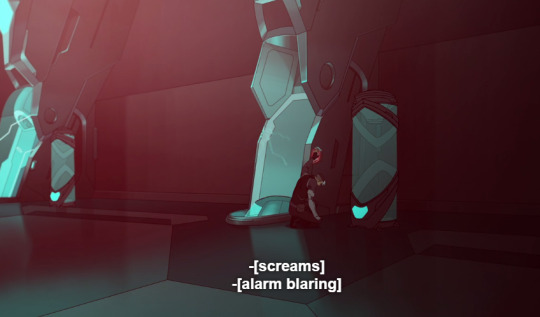
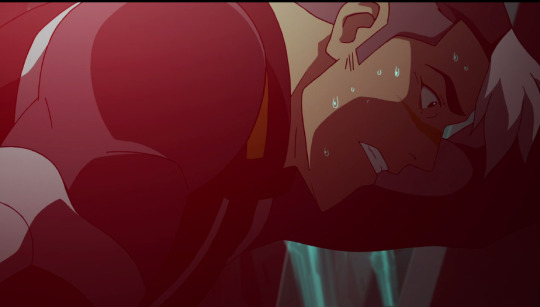
He kills in cold blood. This isn’t really an examination of the morality of the scene, my use of cold blood simply means that Shiro killed somebody who had already been taken down and had no means of fighting back. It’s just a description of his actions in the purest sense.
What’s important is not the morality of his actions, not really, but his own rationale. Why did Shiro do the unnecessary and take out Sendak even though he was already down for the count, and was not the real source of the threat on the castle? It’s because at the moment, Shiro was alone and under threat. Which meant he resorted to his own instincts, his survival instincts, his soldier instincts. Instincts aren’t necessarily logical, so Shiro does the quickest thing he can to move him back to safety. He removes the threat by any means possible. Shiro’s face after the fact says it all, he’s stressed, he’s in shock from what he’s done, he’s not even sure of his own actions.
It’s a common writing technique to stress a character out and show that they always repeat a pattern that is indicative of their true selves when they are pushed to their lowest point. Low points are revealing like that, when Lance is at his low he tries to back away and insist he’s unworthy he has inner feelings of worthlessness, when Allura is at her low point she always relinquishes and gives up control, she feels out of control, Keith in times off high stress laser focuses on the most clear cut path to the objective, Keith has a greater sight of the bigger picture than most.
If what Shiro does in his highest point of stress is to act like a wounded soldier desperate to survive than that is how he sees himself.
This resorting to soldier like logic and instinct over cooler rationale is something present in Kurono too, but firs tand more important it’s a trait shown by Shiro’s foil and fellow black lion pilot Zarkon all throughout his backstory episode.
I would argue Pre-Quintessence Zarkon, and Paladin Shiro have a lot in common. They have similiar reasons for being the black paladin, Shiro is not the best pilot on the team or the smartest but he does have the most experience. Zarkon was the soldier on the team, while Alfor despite building the lions himself was more of a scientist. They’re also both stiff to the point of being awkward, incredibly by the book (As I said before his refusal to simply lie to save Keith’s life in Blade of Marmora suggests extreme lawful good tendencies), but have the capability of being more relaxed. (Shiro plays along with the rest of the paladin’s antics, Zarkon went out of his way to bring Allura a present when she was born and even Alfor comments he’s softened.)
What is most similiar about them however is their primary flaw. When Shiro and Zarkon are both stressed, they revert back to soldier mode.
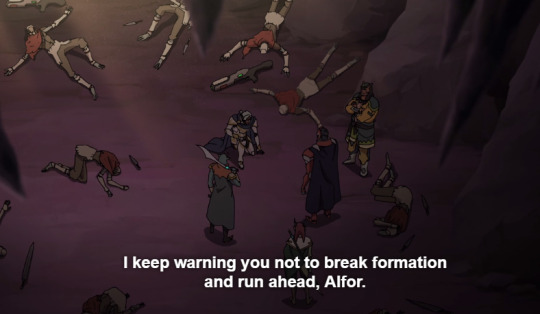
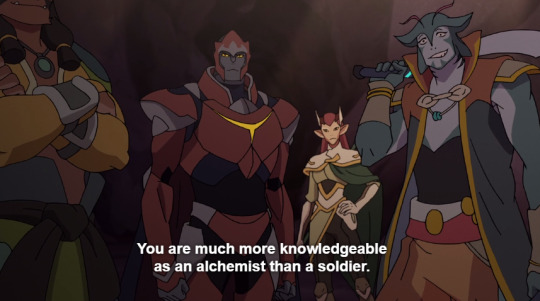
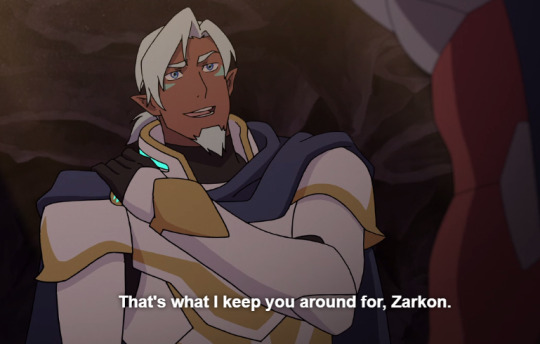
This is referenced several times in episode 7 of season 3, that Zarkon’s primary identity is that of a soldier. When the experiment goes wrong, Zarkon quickly thinks of the potential disaster in the terms of soldiers he is going to lose. That is he is exposed to stress, and processes it like a soldier.

When Alfor disagrees with him much later on, Zarkon immediately pulls rank as if that’s supposed to pull him back into line. Much like an earlier comment when Zarkon tells the others not to speak to the servant class so that they do not erode discipline, Zarkon sees the world in a very rank and file way and expects this simple calling of rank to pull Alfor back into line.

This is almost exactly the same way that Kurono and Keith have their disagreement in episode six, Kurono handles it by ordering Keith exactly what to do rather than relying on Keith’s instincts like he had in the past. Not once, but twice first when he ordered Keith not to go after Lotor, and second when he told them exactly what to do and how to deal with the Teludav. An order which would have left them completely open to Lotor’s trap without Keith’s improvisation.

What is Kurono’s justification for this, it’s very soldier like. “You need to make hard choices Keith.”
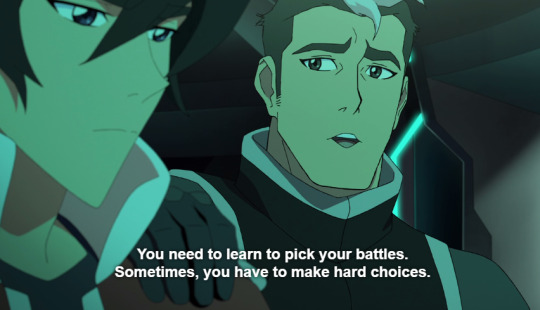
If Kurono as a plot line is meant to be a lens through which we analyze the original Shiro, then we’ve learned two things from this episode alone. One, that everybody on Team Voltron relies too heavily on Shiro to the point of trusting his every word against Keith’s even when Keith was technically now supposed to be the leader. The second is that these flaws that Kurono displays can have their root in the original Shiro too, that Shiro’s flaw is that without his empathy he would at times default to his survivalist and soldier like mindset.
In the same way that Zarkon, Shiro’s much darker reflection when stripped away from his love and his friendship, becomes only able to act as a soldier and declare war.
#vld meta#voltron meta#shiro#voltron character analysis#voltron theory#takashi shirogane#shiro analysis#shiro theory#meta
69 notes
·
View notes